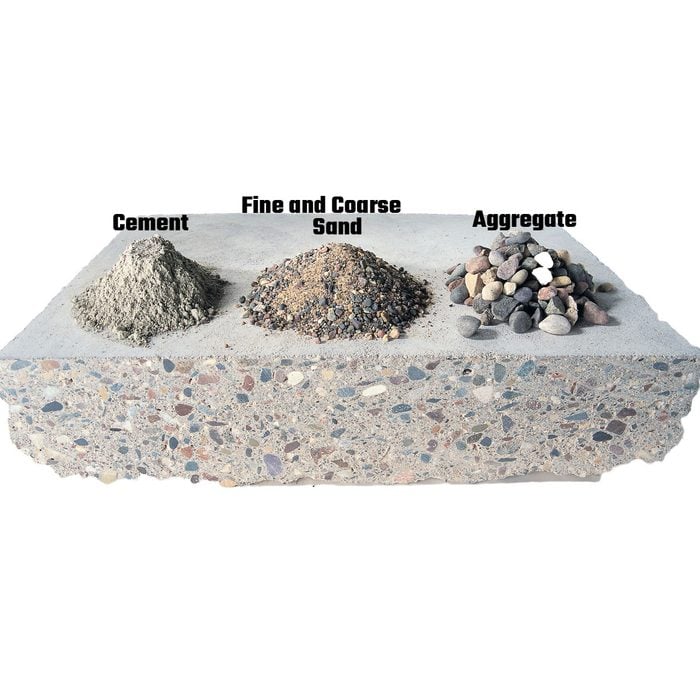Comprehensive Overview to Concrete: From Installment to Ending Up Touches
Comprehensive Overview to Concrete: From Installment to Ending Up Touches
Blog Article
Revealing the Eco-Friendly Advantages of Utilizing Recycled Concrete in Lasting Construction Practices
In the world of sustainable construction techniques, the usage of recycled concrete stands as a pivotal yet often underestimated resource. Past its conventional applications, recycled concrete deals a myriad of eco-friendly benefits that prolong much past the confines of typical building and construction materials.
Environmental Benefits
Undoubtedly, one of one of the most significant advantages of utilizing recycled concrete is its positive influence on the environment. By including recycled concrete right into building methods, there is a considerable reduction in the demand for brand-new resources, causing conservation of natural deposits. This process helps in maintaining aggregates, water, and power that would have been utilized in generating brand-new concrete. In addition, making use of recycled concrete lessens the quantity of waste being sent to land fills, thereby lowering ecological air pollution and easing the pressure on land fill capacities.

In comparison, recycled concrete has a lower carbon footprint as it decreases the demand for brand-new concrete manufacturing. In general, the ecological advantages of making use of recycled concrete are significant and play a crucial duty in advertising eco-friendly building and construction techniques.
Cost-Efficiency
Accomplishing cost-efficiency is a paramount consideration when assessing the application of recycled concrete in building projects. One of the essential advantages of utilizing recycled concrete is its cost-effectiveness contrasted to conventional concrete.
In addition, using recycled concrete can cause savings in landfill prices by diverting concrete waste from disposal sites. This not only decreases the ecological impact however likewise gets rid of the prices connected with waste elimination. The durability and efficiency of recycled concrete are similar to traditional concrete, ensuring that cost financial savings do not endanger the top quality of the building and construction.
Resilience and Strength
Thinking about the considerable cost-efficiency benefits of using recycled concrete, it is critical to analyze its longevity and strength in construction applications. Recycled concrete offers equivalent, if not superior, toughness and toughness homes to traditional concrete. With advancements in handling techniques and quality assurance, recycled concrete can satisfy or go beyond the performance standards of conventional concrete. The procedure of reusing concrete entails squashing, sorting, and evaluating old concrete to create accumulations that can be utilized in brand-new construction jobs. These recycled accumulations are capable of giving sufficient compressive stamina, longevity, and long-lasting efficiency.

Waste Reduction
Effective waste reduction practices play a critical duty in the sustainable usage of sources within the building and construction sector. When it comes to utilizing recycled concrete, waste decrease is a crucial advantage that contributes considerably to ecological preservation. Standard building and construction methods usually produce significant quantities of waste, particularly in the kind of concrete debris from demolition sites. By integrating recycled concrete right into construction tasks, this waste is repurposed and diverted from landfills, reducing the overall environmental effect of construction tasks.
In addition, the use of recycled concrete can lead to cost financial savings for building tasks, as it is typically a lot more budget friendly than sourcing and moving brand-new products - Concrete. In final thought, waste decrease via the utilization of recycled concrete is an essential element of sustainable building practices that profits both the construction and the environment market as a whole.
Power Conservation
When it comes to using recycled concrete in building, significant power cost savings are accomplished compared to conventional concrete production. The process of creating recycled concrete entails squashing and recycling existing concrete materials, which eats less energy than mining, processing, and transferring raw products for brand-new concrete manufacturing.
Conclusion
To conclude, the utilization of recycled concrete in sustainable construction techniques uses many environmental benefits, cost-efficiency, sturdiness, strength, waste decrease, and power conservation. By integrating recycled concrete right into construction jobs, we can add to a much more sustainable and eco pleasant future. It is crucial more tips here for the construction sector to prioritize the usage of recycled materials description to help decrease the ecological impact of building tasks.
One of the key advantages of using recycled concrete is its cost-effectiveness contrasted to standard concrete.In addition, the usage of recycled concrete can lead to savings in landfill expenses by diverting concrete waste from disposal sites. The sturdiness and performance of recycled concrete are equivalent to traditional concrete, guaranteeing that cost savings do not jeopardize the top quality of the building.
:max_bytes(150000):strip_icc()/GettyImages-941748918-5c7f3654c9e77c00012f82f6.jpg)
Report this page